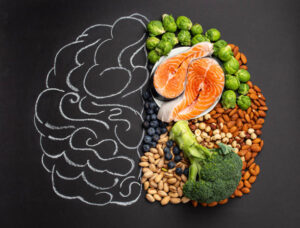Recycling and upcycling have become essential strategies for managing waste sustainably in recent times. Through these practices, old materials are given new life, reducing our environmental impact.
While upcycling transforms items into something new and valuable, recycling breaks down materials into new products. The two methods play a crucial role in conserving resources and reducing landfill waste.
We can significantly reduce our carbon footprint and protect natural resources by embracing upcycling and recycling. Furthermore, recycling practices create jobs in the industry and reduce production costs. As a result, they make a positive contribution to the environment as well as to the health and sustainability of our planet for future generations.
What is the Difference Between Upcycling and Recycling?
Upcycling represents a creative transformation of waste items into novel products, aiming to preserve the original characteristics of the repurposed item, in stark contrast to recycling. While offering similar benefits as recycling, such as waste diversion and resource conservation, upcycling places a significant emphasis on creativity and sustainability, possibly mitigating adverse environmental impacts.
On the other hand, recycling involves breaking down waste materials to generate new products, often leading to the alteration or loss of the original form of the waste item. Despite its advantages in waste diversion and resource conservation, recycling’s reliance on industrial processes can be energy-intensive, potentially resulting in environmental repercussions.
Benefits of Upcycling and Recycling

Upcycling and recycling are integral components of sustainable waste management, offering a multitude of environmental, economic, and social benefits that contribute to a greener and more resource-efficient world.
Environmental Benefits
- Waste reduction: Both upcycling and recycling help reduce the amount of waste sent to landfills, conserving valuable landfill space and mitigating environmental pollution.
- Resource conservation: By reusing and repurposing materials, upcycling and recycling reduces the demand for virgin raw materials, conserving natural resources such as timber, metals, and petroleum-derived plastics.
- Energy savings: Upcycling often requires less energy compared to manufacturing new products from raw materials, leading to energy savings and reduced greenhouse gas emissions.
- Emission reduction: Recycling and upcycling contribute to lower carbon emissions by reducing the need for energy-intensive processes involved in extracting, processing, and manufacturing new materials.
Economic Benefits
- Cost savings: Upcycling and recycling can lead to significant cost savings for businesses and municipalities by reducing waste disposal fees, raw material procurement costs, and production expenses.
- Job creation: The recycling industry creates jobs in the collection, sorting, processing, and manufacturing sectors, contributing to economic growth and employment opportunities.
- Market opportunities: Upcycled and recycled products tap into growing consumer demand for sustainable and eco-friendly goods, opening up new market opportunities and enhancing brand reputation.
- Resource efficiency: Utilizing recycled materials in manufacturing processes improves resource efficiency, as recycled materials often require less processing and energy compared to virgin materials.
Social Benefits
- Community engagement: Upcycling and recycling initiatives foster community involvement through education, awareness campaigns, and participation in recycling programs, promoting a sense of environmental responsibility.
- Public health: Reduced landfill waste and pollution from incineration contribute to improved air and water quality, benefiting public health and well-being.
- Empowerment: Upcycling empowers individuals and communities by promoting creativity, entrepreneurship, and skills development in crafting, design, and sustainable practices.
- Educational opportunities: Recycling programs and upcycling initiatives offer educational opportunities for schools, universities, and communities to learn about waste management, environmental conservation, and circular economy principles.
Navigating the Challenges of Upcycling and Recycling
Upcycling Constraints
The world of upcycling is not without its challenges, and understanding these constraints is crucial for the successful implementation and scalability of upcycling projects.
a. Resource availability
One of the primary challenges in upcycling is the limited availability of suitable materials. While upcycling thrives on creativity and innovation, the availability of specific materials can significantly impact the feasibility of upcycling initiatives.
For example, repurposing certain types of plastics or metals may be more feasible in regions with abundant waste streams of these materials.
However, in areas where such materials are scarce, sourcing becomes a major hurdle. This challenge underscores the importance of local partnerships, waste management infrastructure, and supply chain optimization in upcycling endeavors.
b. Design complexity
The complexity of designs and materials poses another challenge in upcycling. While simple items like glass bottles or cardboard boxes are relatively straightforward to upcycle, complex designs or composite materials require specialized skills, tools, and resources. This complexity not only increases production costs but also limits the scalability of upcycling projects.
Overcoming this challenge often involves collaborations with designers, artisans, and manufacturers with expertise in upcycling techniques and materials.
Recycling Challenges
On the recycling front, several persistent challenges continue to impact the efficiency and effectiveness of recycling processes worldwide.
a. Contamination issues
Contamination of recyclable materials remains a significant hurdle in recycling operations. When recyclables are contaminated with non-recyclable items like food waste, plastic films, or hazardous materials, it compromises the quality and purity of recycled materials.
Contamination not only reduces the value of recycled materials but also increases processing costs and hampers the recyclability of the materials.
Addressing contamination requires robust education and outreach efforts to promote proper waste sorting at the source, as well as investments in advanced sorting technologies and facilities.
b. Technological barriers
Advancing recycling technologies face various technological barriers that hinder their widespread adoption and effectiveness. One of the key barriers is the infrastructure required for recycling processes, such as sorting facilities, material recovery facilities (MRFs), and recycling plants.
Establishing and maintaining this infrastructure involves substantial investments in equipment, maintenance, and operational costs.
Additionally, some materials pose technological challenges due to their complexity or hazardous nature. For instance, recycling electronic waste (e-waste) requires specialized equipment for safe dismantling and material recovery, adding to the technological barriers to recycling.
Innovation and Future Trends

Advancements in Upcycling Techniques
Innovations in upcycling techniques are paving the way for a new era of waste transformation as the world embraces sustainable practices. We are revolutionizing how we repurpose and reuse resources thanks to technological innovations and sustainable materials.
a. Technological innovations
Upcycling technologies are continuously improving in efficiency and creativity. Upcycling processes are becoming more precise and intricate with the help of innovations such as 3D printing, advanced robotics, and computer-aided design (CAD) software.
Using 3D printing, for instance, it is possible to create complex upcycled products with minimal waste. Using bioplastics or recycled plastics, 3D printers can create custom items with high precision and reduce material consumption and waste.
Automating repetitive tasks with robotics and streamlining production processes play a significant role in upcycling. The use of artificial intelligence algorithms can enable robots to identify recyclable materials, disassemble products for upcycling, and perform intricate assembly tasks.
CAD software provides tools for virtual prototyping and optimization in upcycling. By simulating upcycled products, testing different materials and configurations, and refining designs before physical production, trial-and-error waste is reduced.
b. Sustainable materials
Using eco-friendly and sustainable materials is a driving force behind innovation in upcycling. Reclaimed wood, recycled metals, biodegradable plastics, and upcycled textiles are sustainable materials with environmental benefits.
When compared to virgin timber, reclaimed wood has a unique character and has a reduced environmental impact. Furniture, flooring, and decor items made from reclaimed wood help reduce waste and preserve natural resources.
Through processes like smelting and casting, recycled metals are transformed into new products. In addition to reducing greenhouse gas emissions, upcycling recycled metals conserves energy.
The use of biodegradable plastics offers a sustainable alternative to traditional plastics. A circular economy is supported by upcycling biodegradable plastics into packaging, utensils, or textiles.
By upcycling textiles, you can create new garments, accessories, or home textiles from discarded clothing or fabric scraps. Technological innovations in textile recycling enable textile waste to be transformed into valuable products through fiber regeneration, chemical recycling, and mechanical shredding.
Recycling Innovations
Recycling innovations have been at the forefront of the movement towards a circular economy, driving progress towards more efficient and sustainable waste management. Innovations in recycling include a variety of approaches, from adopting circular economy models to integrating smart technologies.
a. Circular economy models
In terms of waste management, circular economy models represent a paradigm shift. Circular economy principles emphasize continuous reuse, recycling, and repurposing of materials rather than a linear “take-make-dispose” approach.
“Cradle-to-cradle” is one example of a successful circular economy model, which designs products with easily recyclable or biodegradable materials. Circular economy models reduce overall waste and resource consumption by closing the loop and minimizing waste generation.
b. Smart recycling technologies
Smart recycling technologies are revolutionizing traditional recycling processes by improving their accuracy, efficiency, and sustainability. Every stage of the recycling process is optimized through data, automation, and artificial intelligence.
High-precision sensors and sorting algorithms are used in sensor-based sorting systems, for instance. Additionally, contamination and processing costs can be reduced as a result of this process.
In smart recycling, Internet of Things (IoT) devices enable real-time monitoring of recycling equipment and waste streams. In the future, IoT-enabled bins and containers will be able to track waste levels, schedule collections more efficiently, and provide insights for better waste management.
Blockchain technology can also enhance recycling supply chain transparency and traceability. Blockchain can promote responsible recycling practices by creating immutable records of recycling transactions.
Global Perspectives on Upcycling and Recycling
Upcycling Initiatives Worldwide
When we talk about upcycling, it is not limited by borders; it is a global movement with initiatives spanning continents and cultures. It has been proven to have a positive impact on the environment and society across the globe, as demonstrated by countless success stories.
a. Success stories
In Europe, initiatives like the “Precious Plastic” movement have gained traction, empowering communities to turn plastic waste into valuable products through accessible recycling machines. This initiative not only reduces plastic pollution but also fosters entrepreneurship and local economic development.
Moving to Asia, countries like Japan have embraced upcycling as a core component of their sustainability efforts. From upcycled fashion to innovative household items, Japanese designers and manufacturers are leading the way in showcasing the aesthetic and functional possibilities of upcycled materials.
In Africa, upcycling initiatives are addressing both environmental challenges and socio-economic inequalities. Projects such as upcycled art installations in South Africa not only raise awareness about waste management but also provide income opportunities for local artists and communities.
b. Collaborative efforts
One of the driving forces behind the global upcycling movement is collaborative efforts involving diverse stakeholders. Collaborations between industries, governments, and communities are instrumental in scaling up upcycling initiatives and driving systemic change.
In Europe, collaborative platforms bring together businesses, policymakers, and NGOs to exchange knowledge and promote best practices in upcycling. These partnerships facilitate the sharing of resources, expertise, and funding to support upcycling ventures.
Similarly, in Asia, cross-sector collaborations between technology companies, universities, and non-profits are fueling innovation in upcycling technologies. Initiatives such as research grants for sustainable materials and joint pilot projects are accelerating the adoption of upcycling solutions across industries.
In Africa, government-led initiatives in collaboration with international organizations are creating enabling environments for upcycling entrepreneurship. Policy frameworks that incentivize upcycling, coupled with capacity-building programs and market access support, are empowering local communities to embrace sustainable practices.
Recycling Practices in Different Regions
Recycling practices vary significantly across different regions due to unique policy frameworks and cultural influences that shape waste management behaviors and outcomes.
a. Policy variations
Diverse recycling policies and regulations play a major role in influencing recycling practices in different regions. The policies affect recycling rates and waste management strategies in a variety of ways, from comprehensive mandates to more lenient approaches.
Recycling is often a priority in regions with strong recycling policies, such as many European countries and some U.S. states. Waste separation requirements, mandatory recycling programs, and strict regulations on waste disposal contribute to higher recycling rates.
In addition, policies like extended producer responsibility (EPR) encourage manufacturers to invest in recycling infrastructure and use recyclable materials in their products at the end of their lives.
A high recycling rate may prove difficult to achieve in regions with less stringent recycling policies. Due to poor infrastructure, insufficient financial incentives, and inconsistent enforcement of recycling regulations, recycling efforts can be hindered.
b. Cultural influences
Cultural attitudes and practices also influence recycling behaviors and outcomes. Individuals and communities approach recycling differently depending on cultural norms, values, and perceptions.
Recycling is part of the lives of citizens of countries with a strong environmental consciousness and culture of sustainability, such as Japan. The citizens are used to a rigorous waste sorting program, recycling programs, and environmentally friendly consumption habits.
Recyclability rates may be lower in regions where waste disposal is inexpensive and convenient or where cultural attitudes toward waste are less sustainable. Often, recycling efforts are hindered by a lack of awareness, apathy, and cultural beliefs that prioritize convenience over environmental impact.
To address cultural influences, we must consider local norms and values. Promoting recycling and sustainable waste management through educational campaigns, community outreach programs, and incentives can help shift cultural attitudes and behaviors.
Understanding how policies and cultural influences interact can help regions improve recycling practices and achieve environmental sustainability goals.
Which of these Approaches is Better for Zero-Waste Living?
Understanding the value of combining recycling and upcycling is the key to understanding the value of both. Even though they have different approaches, they complement each other and greatly enhance sustainability and zero-waste living.
The upcycling and recycling processes can be beneficial to businesses in particular. To reduce waste, practices such as recycling paper, glass, and metal should be implemented as well as exploring opportunities for upcycling.
The suitability of upcycling or recycling hinges on the nature of materials and the desired environmental impact. This informed decision-making process is crucial for effective waste management.
Embracing a Sustainable Future through Upcycling and Recycling
Upcycling and recycling represent distinct yet complementary methods for sustainable waste management and zero-waste living. While recycling involves waste breakdown for new products, upcycling reimagines items without altering their original form.
Understanding these differences is pivotal in making informed waste management decisions. Each approach presents unique advantages, and a combination of both may hold the key to responsible waste management in our journey toward a sustainable future.







